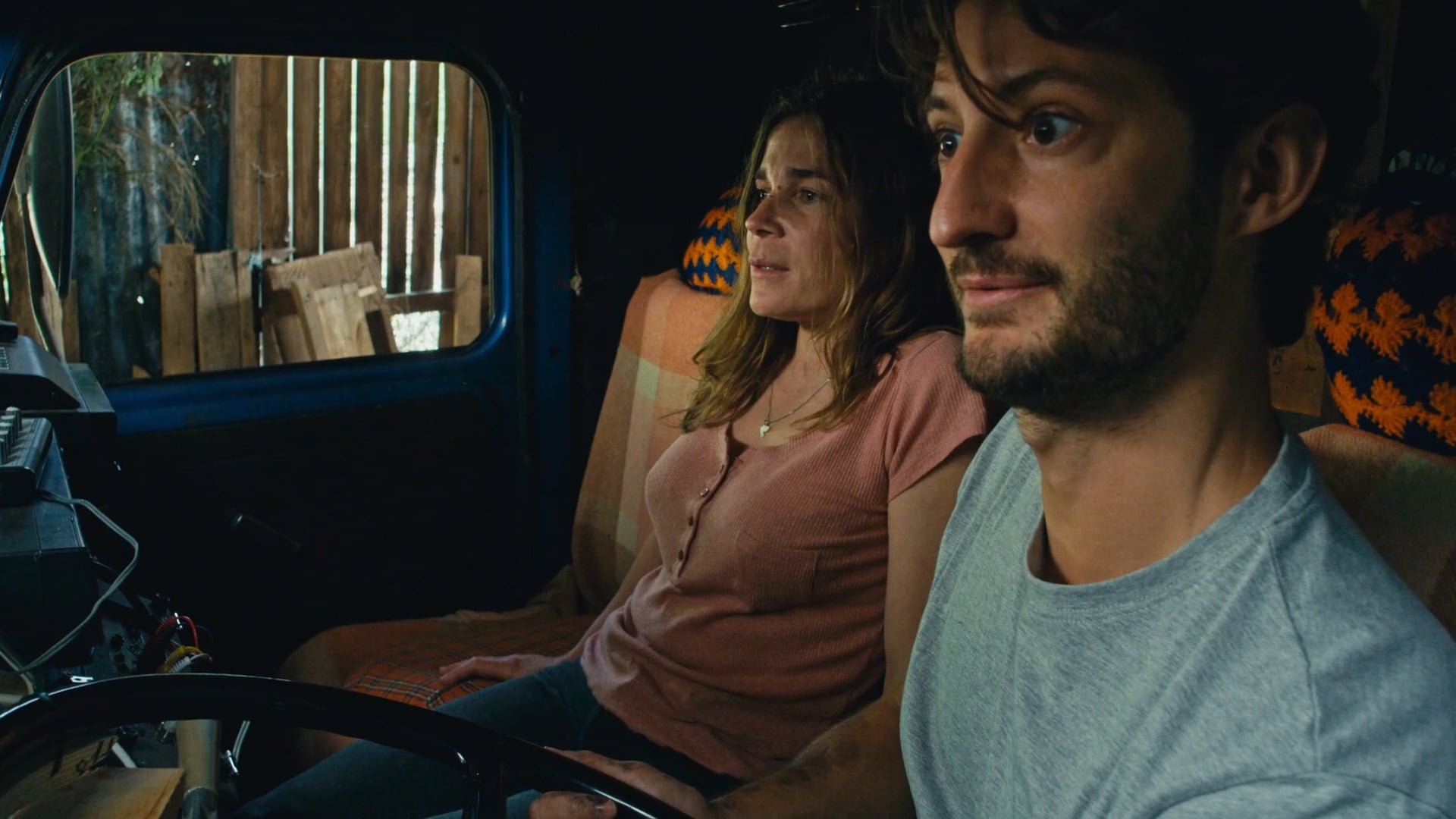review
‘The Book of Solutions’ Review – Art Imitating Artist
After an eight-year break, French director Michel Gondry returns at his very best with The Book of Solutions, a confessional and sublimely inventive ode to the act of filmmaking. Gondry’s films are invariably unpredictable and this oddball comedy is also the most revealing Gondry has ever been. The Book of Solutions holds up a mirror to the ugly, unresolved moments of the emotionally laborious creative process and makes you watch.
The film starts where a character’s journey could otherwise end: Marc (Pierre Niney), a floppy, brown-haired eccentric, presents his film to financiers and producers who all detest his work. They grimace at the grey-washed imagery and indistinguishable actors, instantly shooting down Marc’s vision. Acting in pure desperation, Marc resorts to plan B: stealing all of the celluloid film and editing computers. He takes off to his aunt Denise’s (Françoise Lebrun) humble countryside house in Cévennes to finish the film as he planned. It is here Marc faces his biggest personal and professional challenge: himself.
The DNA of The Book of Solutions is undetachable from Gondry. The film Marc is trying to make, a surrealist four-hour and seven-minute-long arthouse piece, is suspiciously similar to Gondry’s maligned 2013 movie, Mood Indigo. Furthermore, The Book of Solutions becomes even more self-reflective as Marc (with all his Gondry-esque sensibilities) escapes to the countryside to edit his mammoth project—just as Gondry famously did with Mood Indigo a decade ago. The cherry on the meta cake is Marc’s aunt Denise, who is inspired by Gondry’s aunt Suzette—the subject of his documentary The Thorn in the Heart and to whom The Book of Solutions is dedicated.
In classic Gondry fashion, the film is a web of interconnected references and entangled characters where narrative threads fray in sprawling directions, some of which are never truly tied up. The concoction of personal references makes The Book of Solutions an inherently personal film for Gondry, one where self-critique is abundant and the sacrificial nature of the filmmaking endeavour is exposed.

In the pursuit of a masterpiece, Marc flushes his medication down the toilet and moves forward with “the Marc Becker method” (read: listen to no one but himself). He embarks on a hilarious but horrifically self-centred journey, but he doesn’t set off alone. Several editors join Marc, including one other man who coughs too much for Marc’s liking and one young woman he insists will “save” him when the time comes. The editing team stand on the sidelines and take turns chasing after Marc to comfort him after his daily outburst.
Though Marc wholeheartedly intends to make a film, he spends his days doing anything but helping with the edit. His attention is constantly postponed by procrastinating diversions. Marc crashes through the rural serenity of Cévennes and Denise’s home with his childish self-centredness and racing, unfettered imagination. His first obsession is a leaf with a precise pinhole punctured through its crinkly green skin. He squints through the hole, as if he is discovering a lens for the first time and the world is giving him a new perspective. From making a chair to setting up an editing booth in a broken-down van, his ideas grow increasingly manic until he spends two days following a single ant with the purpose of making a documentary on the lone insect.
Aren’t all the greatest minds deluded? But is that a good enough excuse?
Perhaps his most chaotic idea, however, is that he will independently score the film with no prior experience of conducting. Standing in the middle of a quaint studio with professional musicians lining the walls, Marc flails his body around for them to interpret, as though he’s been possessed. It’s one of several hilarious moments in Gondry’s film that fluctuates between comedy and self-referentiality. With a satirical touch skirting the absurd, Gondry pushes the boundaries with this egotistical protagonist.
Cinematic structure becomes the topic of conversation when Marc bursts into the bedroom of his lead editor, Charlotte (Blanche Gardin), in the early hours of the morning to demand the film be edited from the end to the beginning. He posits he will create a palindrome film with stop-motion animation in the middle as an intermission. It’s an idea he swears by, but he’s refusing to watch any editing cuts until he screens it to the public. He must consume the film as it was intended: through the collective viewing experience in a movie theatre.

Though Gondry’s alter ego ventures into surreal, nonsensical sequences, all the while the director finds humanity in the carnage. Fremdschämen, the experience of strong second-hand embarrassment, is perhaps the best way to describe it—you just can’t look away. But amid Marc’s chaos is Denise’s heart of gold and kind-eyed encouragement, as well as Charlotte’s quiet pride over her own work; Gondry sees the women of this story as the real heroes. It’s a microcosm of the film industry: every archetype you can think of is inventively packaged into these memorable characters.
Embedded in The Book of Solutions is the question of why these women—Denise and the editors—continue to stand by Marc’s side (even after he tosses three plates of spaghetti down the stairs when they take a night off). On paper, he’s distinctly unlikable. But there’s no denying Marc is a visionary in all the best and worst ways. Aren’t all the greatest minds deluded? But is that a good enough excuse?
In some lights, The Book of Solutions is Gondry’s open admittance to how soul-crushingly difficult it is for him to give the audience a completed film. In exposing an artist who is painfully trapped by his own creativity, Gondry may be freeing himself from his own imagined goal posts. Maybe Gondry will never really be at peace with movie making, as The Book of Solutions veers off in a completely different direction for its conclusion, as if avoiding arriving at any solution. There is no satisfying end to the artist’s story and maybe there never will be. It solidifies what Gondry has been saying through Marc: though Gondry reasserts the sentiment that an artist’s search for a “solution” is more captivating than that solution could ever be.
Curated by humans, not algorithms.
© 2025 A Good Movie to Watch. Altona Studio, LLC, all rights reserved.